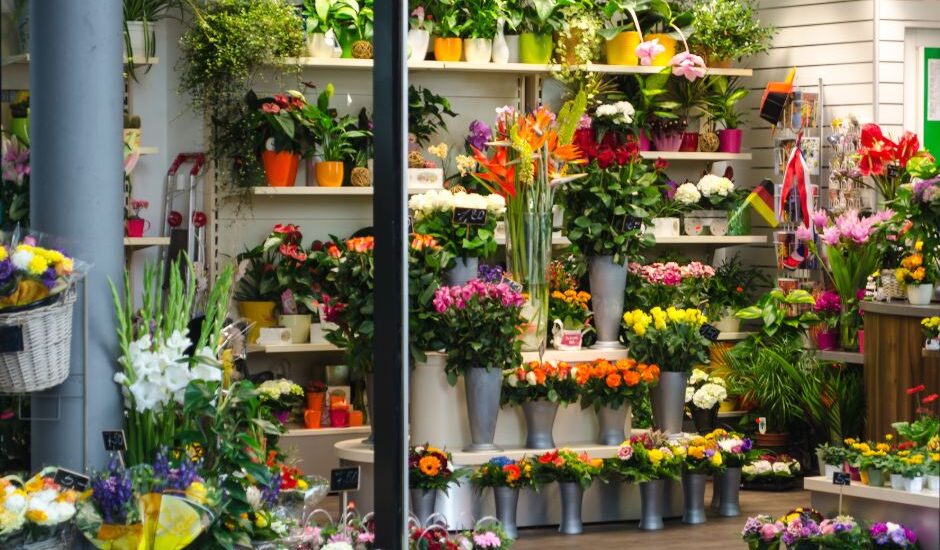Turn your Tokyo apartment balcony into a lush mini garden! 🌿 Discover beginner-friendly herbs, flowers, and greenery that thrive in Japan’s urban climate, plus the best stores and pro tips for small-space gardening.

Small Balcony Gardening in Tokyo: How to Grow a Mini Oasis in the City
As a plant and garden lover, you might be wondering if you need to give up this part of yourself when living in a small space in Tokyo. In a city where space is a luxury, creating a personal green retreat may seem like a dream. However, locals have long mastered living in small homes without compromising their hobbies and passions. With the right tools and tips, your balcony can become a mini plant sanctuary. From fresh herbs for cooking to a pet-safe corner of nature, small balcony gardening is very much possible!
Why Balcony Gardening Is Popular in Tokyo
Balcony gardening has surged in popularity in Tokyo due to several reasons: limited yard space in high-rise apartments and mansions, the mental health benefits of greenery, increased interest in sustainability, homegrown vegetation, and Japan’s deep cultural connection to nature and the seasons (think bonsai and ikebana).
Step 1: Know Your Balcony Conditions
You might be excited to get started, but before you buy materials, let’s evaluate your balcony’s conditions.
First, check for sunlight and its course/direction during the day. South-facing balconies get the most sun while north-facing ones may need shade-tolerant plants.
Second, wind strength. Higher floors can get windy, so it’s recommended to use heavier pots or anchor your containers and properly secure more delicate tall plants.
Drainage is another important concern. Make sure that water can properly escape to avoid root rot as well as neighbor disputes.
Lastly, it’s advised to check your building rules as some apartments prohibit hanging pots or tall plants. These are usually stated in your lease, or you can ask the landlord directly.
Step 2: Choose the Right Plants for Your Balcony

Let’s get to the fun part – choosing your plants! Here are a couple of suggestions that can tolerate sun, wind, and seasonal humidity, plus they’re beginner-friendly.
Edible Plants (Herbs & Veggies)
The following plants are perfect for balconies that get at least 4 hours of sunlight per day. Not only do they smell amazing, but they’re also practical for home cooking!
- Shiso (Perilla) – Grows best from spring to autumn. Use in salads, sushi, or tempura. Easy to grow in pots.
- Mini Tomatoes – These can be planted in spring (April – May) and harvested in summer. It requires staking and deep pots.
- Lettuce and Komatsuna (Japanese mustard spinach) – Can grow all year, but prefers cooler temperatures. Can be harvested continuously!
- Basil – Thrives in full sun from late spring through summer. Pinch regularly to promote bushy growth. Use fresh for pasta, pesto, or salads.
- Rosemary – A perennial herb that thrives in Tokyo’s seasons. Requires good drainage and lots of sunlight. Excellent for grilled recipes and soups.
Flowers
Now for some beautiful splashes of color on your balcony. Opt for flowers that can handle Tokyo’s summer humidity or winter chills.
- Pansies or Violas – These are best grown from fall to early spring. They’re easy to maintain and bloom for months.
- Petunias – Look no further for flowers that love the sun! You can plant them compactly in a flower bed or hang them in a pot for a trailing variety.
- Marigolds – Not only do they bloom from spring to fall, withstanding the summer heat, but they are also great for deterring pests.
Indoor – to- Outdoor Greenery
These are double-duty plants that thrive both inside and outside, depending on the weather or your preferences.
- Spider plant (Chlorophytum) – They tolerate indirect light and are very easy to propagate. Plus, they’re pet-friendly!
- Succulents – Ideal for sunny balconies with little rainfall. Opt for jade plant, echeveria, or haworthia as starter succulents.
- Ferns – Some, like the Japanese holly fern, thrive in shade and love the humidity, making this a go-to plant for the Tokyo environment.
Pro Tip: If space is limited, you can use rectangular planters with dividers so you can grow multiple plants at once, as long as they are compatible with each other. You can even group herbs in tiers or wall-mounted racks to save floor space.
Step 3: Where to Buy Plants and Tools in Tokyo
From 100-yen stores to hidden nurseries, Tokyo has a surprising number of places to get gardening supplies. Here are a couple to get you started on your plant journey.
Budget-friendly 100-yen stores – Daiso, Seria, Can Do, and other 100-yen stores sell starter gardening equipment, from pots, planters, gloves, watering cans, netting, trellises, and soil. They even sell real plants, so you have everything you need to get started without breaking the bank.
Mainstream options – For more advanced and stylish options, you can visit home improvement/hardware stores like Shimachu Homes, Sekichu, Cainz, and Komeri. These have solid garden sections, selling a wide variety of in-season plants, flowers, and even trees! You can also find all types of soil, compost, and fertilizers at these shops. Meanwhile, if you’re after more design-oriented options for balconies, albeit more pricey (but cute), check out Tokyu Hands or Loft.
Specialty nurseries and plant shops – Ozaki Flower Park in Nerima, Green Scape in Meguro, and The Plant Society in Koto are a couple of options worth visiting if you’re after more specific plants that can’t be found in general stores.
Online options – For those who prefer to shop online, Facebook Marketplace, Tokyo Sayonara Sale groups, Rakuten/Mercari or Amazon Japan are great platforms for gardening equipment and plants.
Indoor Greenery: For Tokyo Renters Without Balconies
Don’t have a balcony? Not to worry. You can still enjoy plant life indoors with the right picks and placement. With a little planning, even the smallest Tokyo apartment can become a green sanctuary.
Low-Light and Compact Indoor Plants
ZZ Plant (Zamioculcas zamiifolia) – Almost indestructible and thrives in low light. You only need to water when the soil is completely dry.
Snake Plant (Sansevieria) – Stylish plant that grows vertically. It also needs minimal watering and light. Take note that these plants are not pet-friendly and are toxic to cats and dogs.
Pothos (Epipremnum aureum) – A stylish plant that can be hung or placed on high shelves. You can forget to water them, and they’ll be fine. They even help purify indoor air!
Mini Cactus or Succulent Sets – If you’ve got windows that get some sun, you can place these plants for a touch of green indoors.
Indoor Herb Garden
For edible plants, mint and basil can be grown indoors, although they need around 5 hours of sun and frequent watering. You must also trim them often to promote growth. If you lack sunlight, you can use compact LED grow lamps, which are available online or home centers like Nitori.
Care Tips for Indoor Plants in Tokyo

Taking care of plants indoors requires a bit more setup due to the environment. To balance humidity, you can use a tray with pebbles and water under the pots, which mimics humidity. Plants dry out quickly when exposed to constant draft, so avoid direct airflow from air conditioning, fans, or heaters. Lastly, it’s advised to rotate indoor plants regularly as they tend to lean toward light sources, which can result in uneven growth.
Balcony or indoor gardening in Tokyo is more than just a hobby – it’s a lifestyle upgrade. Regardless of your goal, be it an herb garden, a mini leafy jungle, or a floral splash, your small space can become a source of happiness and satisfaction. Combine creativity with practicality, and you’ll be amazed at what your Tokyo balcony (or windowsill!) can grow.
Stay tuned for more exciting content like this! Follow us on our social media platforms and check out our blog regularly to stay updated on the latest news, trends, and insider stories from Japan. Don’t miss out on future updates — sign up for our newsletter for exclusive content delivered straight to your inbox!



